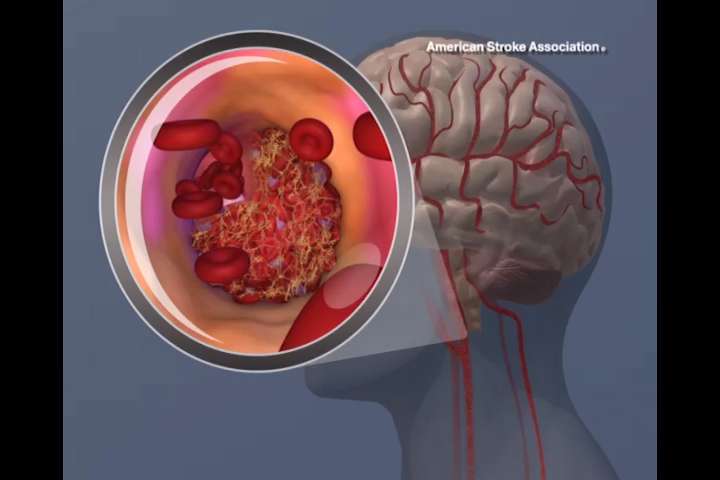New research on the brain's backup motor systems could open door to novel stroke therapies

New research published in The Journal of Physiology could open the door to new therapies to improve the movement of arms and hands of stroke survivors.
Around 8 in 10 stroke survivors are affected by one-sided weakness (called 'hemiparesis') which can cause difficulty in moving one side of the body. This can cause the loss of fine motor control in the arm and hand on the opposite side to the side of the brain damaged, ie injury to the left side of the brain can cause loss of movement in arms and hand on the right side.
It has been shown that when a stroke survivor lifts up their affected arm, activity in the brain switches from the affected side, which would normally control the movement, to the non-affected side, which normally controls movement of the opposite arm.
Switching brain sides is an adaptive strategy used by the body's nervous system that enables the brain to tap into 'backup' motor systems that bypass the regions damaged by the stroke, allowing an individual with a stroke to lift more of the weight of their arm. However, as well as the shoulder, this process will also involuntarily activate the elbow flexor muscles, which is a characteristic motor impairment of stroke known clinically as the "flexion synergy".
Encouraging the brain to use the affected side would therefore improve movement control by reducing the effects of this "flexion synergy". Therefore this research suggests that stroke rehabilitation interventions could be developed that promote the use of the affected side of the brain while preventing the use of the non-affected side. This may be achieved through the use of rehabilitation devices that begin by unweighting the affected arm and then progressively increasing the weight of the arm across therapy sessions as reaching function improves.
The study conducted at Northwestern University, involved using a robotic device to control shoulder effort and precisely measure reaching movement with accurate identification of the location of brain activity in real time through the application of 160 electrodes on each participant's head.
Only participants who had their stroke at least a year before participating in the study were used thus how the use of the non-affected side of the brain changes during recovery from stroke is still unknown.
Julius Dewald, the principal investigator on the project commented on the results:
"We plan to study the use of the non-affected side of the brain and associated indirect motor pathways during early recovery from stroke. We will do this by progressively increasing the weight of the affected limb while measuring reaching performance at set times during the recovery process."
"The neural mechanism underlying the flexion synergy phenomena is believed to be mediated by indirect motor pathways via the brainstem from the non-affected side of the brain. We are also investigating whether targeted drugs can manipulate these 'backup' motor systems post-stroke, which could ultimately open a door to new therapies to aid physical rehabilitation."
More information: "Progressive recruitment of contralesional cortico-reticulospinal pathways drives motor impairment post-stroke" Journal of Physiology (2018). DOI: 10.1113/JP274968


















